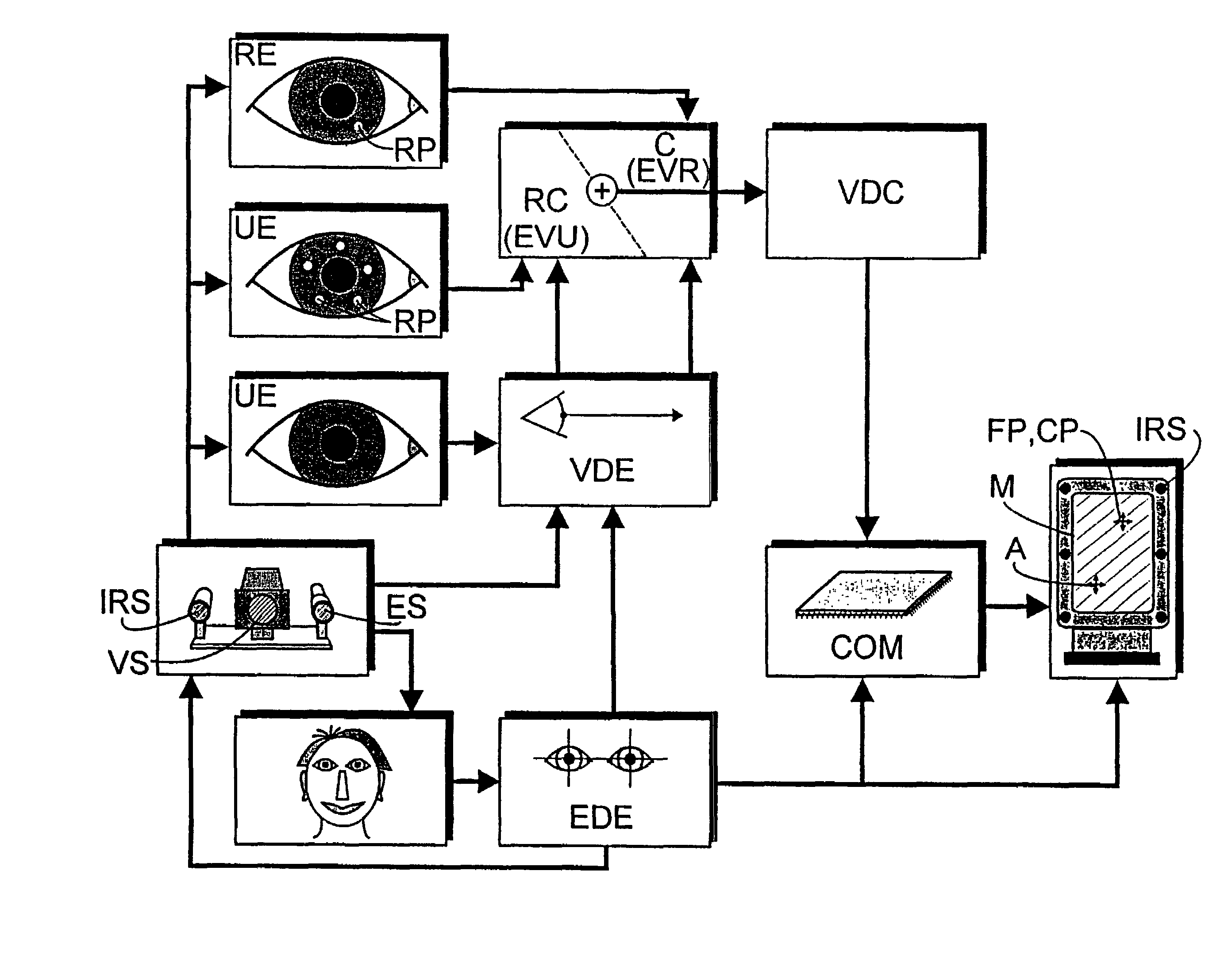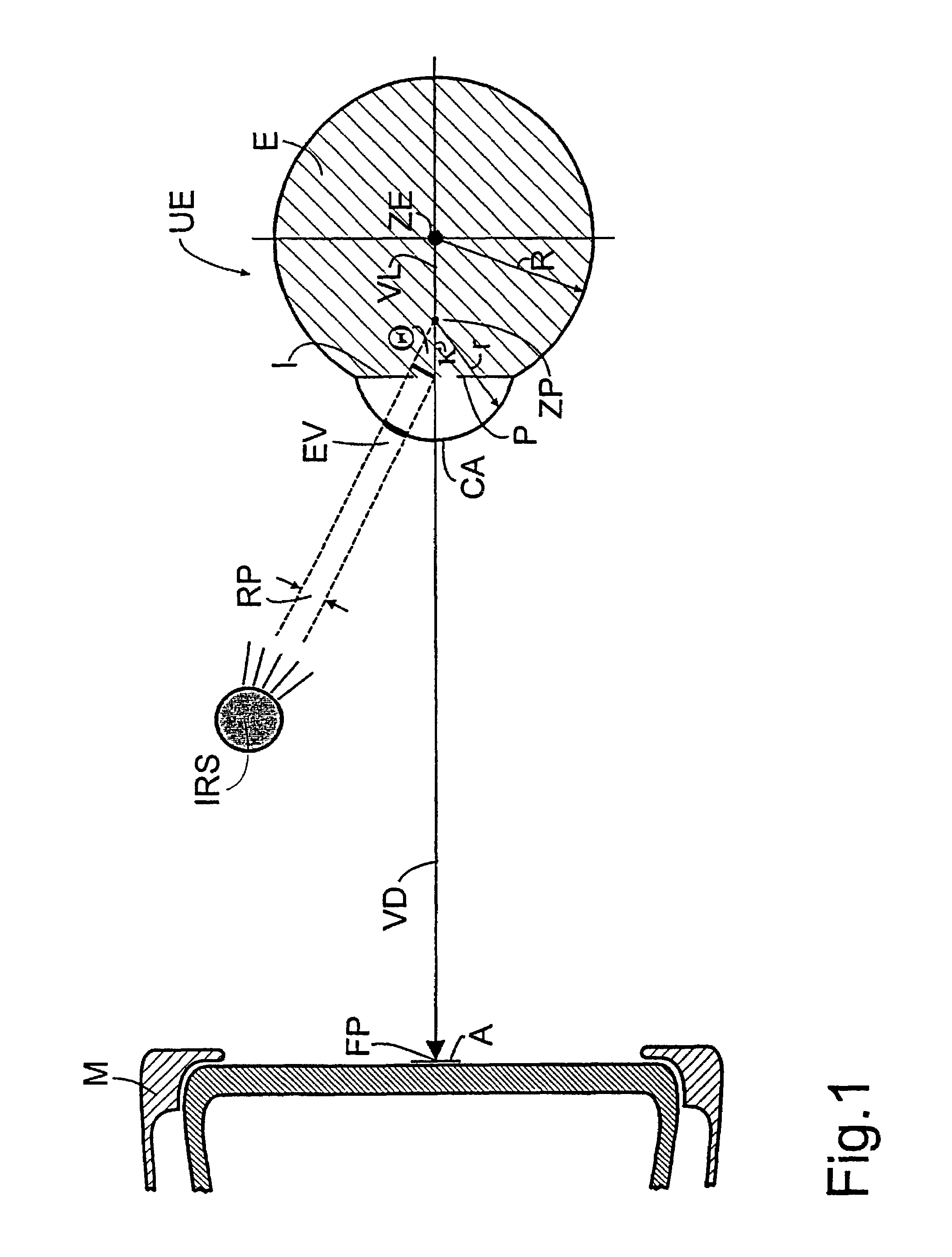Method and apparatus for computer-aided determination of viewer's gaze direction
a technology of computer-aided determination and viewer's gaze, applied in the field of contact-free video, can solve problems such as prevailing complexity, and achieve the effects of reducing complexity, reducing discomfort, and maximum precision in measuring the view direction
- Summary
- Abstract
- Description
- Claims
- Application Information
AI Technical Summary
Benefits of technology
Problems solved by technology
Method used
Image
Examples
Embodiment Construction
[0028]FIG. 1 depicts a simplified model for describing the human eye on the basis of which the basic concepts of the process in accordance with the invention proceeding on the cornea-reflex-method are to be described in greater detail. The eyeball E is an approximate sphere having a fulcrum ZE. The cornea (Cornea CA) is positioned at the forward side of the eyeball E, and its surface is spherically shaped and is of radius r. The iris I is modeled as a circular disc having a central aperture (Pupille P). The optical axis of the eye E connects the fulcrum ZE of the eyeball with the center ZP of the pupil P and is called visual axis VL the direction of which (it points from the fulcrum ZE to the center ZP of the pupil) defines the view direction VD. When the view direction VD is changed the eyeball E rotates about its fulcrum ZE. The fixation point FP is the intersection of the visual axis VL of an eye E and the surface of the viewed icon A. In normal dual eye vision the fixation point...
PUM
 Login to View More
Login to View More Abstract
Description
Claims
Application Information
 Login to View More
Login to View More - R&D
- Intellectual Property
- Life Sciences
- Materials
- Tech Scout
- Unparalleled Data Quality
- Higher Quality Content
- 60% Fewer Hallucinations
Browse by: Latest US Patents, China's latest patents, Technical Efficacy Thesaurus, Application Domain, Technology Topic, Popular Technical Reports.
© 2025 PatSnap. All rights reserved.Legal|Privacy policy|Modern Slavery Act Transparency Statement|Sitemap|About US| Contact US: help@patsnap.com



